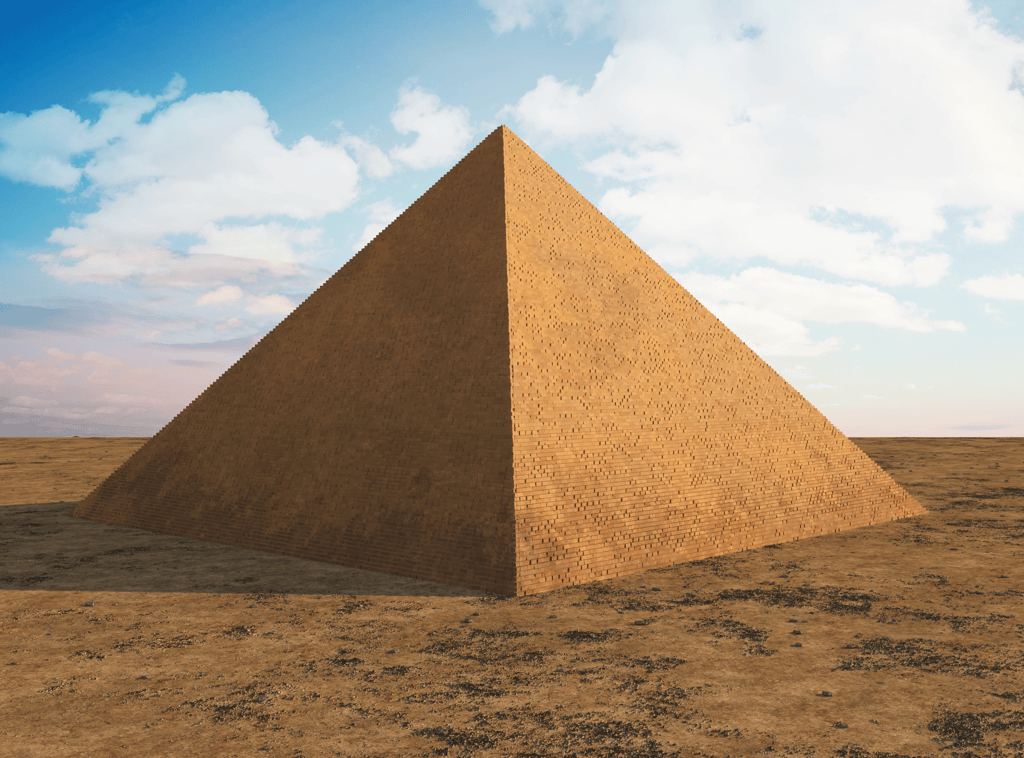
Mysterious Egyptian Pyramids
The construction of the Egyptian pyramids involved several key aspects: the design and layout showcased their unique geometric shapes and spatial arrangements, while innovative building techniques utilized advanced methods for transporting and assembling massive stone blocks. The ancient Egyptians demonstrated significant mathematical and engineering knowledge, ensuring precise alignments and proportions. A well-organized labor force, comprising skilled workers rather than slaves, played a crucial role in their construction, highlighting the complexity of the project. Notable architectural features included intricate internal chambers and passageways, each serving a specific purpose. Additionally, the pyramids held deep symbolic and religious significance, representing the pharaohs’ connection to the divine and their journey to the afterlife.
MYSTERY
5 min read



Pyramids, especially those from ancient Egypt, are remarkable feats of engineering and architecture. The most famous pyramids were constructed during the Old Kingdom period of Egypt (around 2600–2500 BCE). Here are some key architectural and building aspects of these structures:
Design and Layout
Shape and Purpose: The pyramid's shape is believed to represent the sun's rays or the mound from which the earth was created. It symbolizes the journey to the afterlife, with the pointed top meant to help the deceased pharaoh's soul ascend to heaven.
Orientation: Most pyramids, particularly those at Giza, are aligned with great precision to the cardinal points (north, south, east, and west), showing a deep understanding of astronomy and geography.
Internal Structure: The Great Pyramid of Giza, for example, contains a series of chambers and passageways. A descending passage leads to an underground chamber, a large central King's
chamber, a Queen's chamber, and the Grand Gallery.
Building Techniques
Material: Limestone was commonly used for the pyramid's core, with higher-quality limestone or granite often used to line the outer casing for a smooth finish. The interior chambers and passages were often constructed with granite, which is more durable.
Quarrying and Transport: Stones were quarried nearby or brought from distant locations (like the granite from Aswan). They were transported using sleds, rollers, and possibly water channels.
Construction Techniques: Builders used ramps (straight, zigzag, or circular) to lift the massive stones into place. The method of ramp construction is still debated, but they were essential in reaching the pyramid’s higher levels.
Precision: The Egyptians achieved incredible accuracy with their cuts and alignments. The joints between stones in some areas of the Great Pyramid are so precise that a piece of paper cannot fit between them.
Mathematical and Engineering Knowledge
Golden Ratio and Geometry: It's believed that the design of the pyramids incorporated geometric ratios such as the Golden Ratio (φ ≈ 1.618) and the Pythagorean theorem to achieve harmonious proportions.
Leveling and Alignment: The base of the pyramids is almost perfectly level, with differences in height across the sides being minimal. They used tools like the plumb line, square, and leveling instruments to ensure this precision.


Labor and Workforce
Skilled Labor: Contrary to popular belief, the pyramids were not built by slaves but by a well-organized workforce consisting of skilled laborers, masons, engineers, and architects. There is evidence that workers were housed in nearby villages and provided food and shelter.
Logistics and Organization: The construction involved meticulous planning and resource management. Workers were divided into teams with specific roles, ensuring a systematic approach to quarrying, transporting, and assembling the stones.
Notable Features in Pyramid Architecture
Step Pyramid: The earliest pyramids, like the Step Pyramid of Djoser, were built as a series of stacked mastabas (flat-roofed structures), creating a stepped appearance.
Smooth-sided Pyramids: Later, pyramids, like those at Giza, evolved into smooth-sided structures with a more sophisticated design. This transition marked an evolution in the understanding of structural engineering.
Casing Stones: The outer casing stones were often polished limestone, which reflected sunlight and made the pyramids shine brilliantly, making them visible from afar.
Symbolism and Religious Significance
Connection to the Sun God Ra: Pyramids were considered the earthly symbol of the sun's rays and a connection to the sun god, Ra. Pharaohs were seen as the sons of Ra, and the pyramid shape was believed to help them ascend to the heavens after death.
Funerary Complexes: Each pyramid was part of a larger funerary complex that included temples, causeways, and smaller pyramids for queens or other royal family members. These complexes were places of worship and rituals, ensuring the deceased's journey to the afterlife.
The pyramids of Egypt, particularly the Great Pyramid of Giza, remain one of the most studied and marveled-at achievements in architecture, demonstrating advanced knowledge of engineering, astronomy, and mathematics. Their construction methods, though still partly a mystery, reflect the ingenuity and ambition of the ancient Egyptian civilization.
Why are Egyptian pyramid mysterious?
The Egyptian pyramids are often considered mysterious for several reasons, stemming from their construction, purpose, and the ancient civilization that built them. Here are some of the key factors contributing to this mystique:
1. Advanced Engineering and Construction Techniques
Precision and Scale: The pyramids, especially the Great Pyramid of Giza, were constructed with incredible precision using massive stone blocks, some weighing several tons. The methods used to quarry, transport, and assemble these stones remain subjects of debate among historians and archaeologists.
Lack of Documentation: There are limited written records detailing the construction process, which leaves many questions unanswered. Ancient Egyptians did not leave behind manuals or blueprints explaining their techniques.
2. Astronomical Alignment
Orientation: The pyramids are meticulously aligned with the cardinal points and celestial bodies. This precision suggests a sophisticated understanding of astronomy, yet the exact methods used to achieve this alignment are not fully understood.
Astronomical Significance: Some researchers believe that the pyramids were aligned to serve as astronomical observatories or to align with significant celestial events, adding layers to their mystery.
3. Symbolism and Purpose
Funerary Functions: While it is generally accepted that the pyramids served as tombs for pharaohs, the exact rituals and beliefs associated with the afterlife and burial practices are not entirely clear. The belief systems surrounding death and the afterlife were complex and varied over time.
Cultural Significance: The pyramids are seen as symbols of the pharaoh’s power and divine connection, raising questions about the societal and religious beliefs that led to such monumental constructions.
4. Hidden Chambers and Passageways
Undiscovered Features: Many pyramids contain hidden chambers and passageways that have yet to be fully explored. Modern technology, such as ground-penetrating radar, has revealed the potential existence of undiscovered spaces within the pyramids, fueling speculation and curiosity.
Legend and Folklore: Over the centuries, myths and legends have emerged about hidden treasures, secret passages, and curses associated with the pyramids, adding to their aura of mystery.
5. Disappearance of Knowledge
Lost Civilizations: Much of the knowledge about pyramid construction and the culture of ancient Egypt has been lost to time. The decline of the civilization, combined with the destruction of records and artifacts, has left gaps in our understanding.
Historical Interpretations: Different historical periods and cultures have interpreted the pyramids in various ways, leading to conflicting theories and misconceptions about their purpose and construction.
6. Enduring Fascination
Cultural Impact: The pyramids have captured the imagination of people worldwide, inspiring countless books, movies, and documentaries. This ongoing fascination perpetuates their mystique and keeps the questions about their origins and purpose alive in popular culture.
Archaeological Discoveries: Continuous archaeological work in Egypt often yields new discoveries related to the pyramids, prompting renewed interest and speculation about their significance and the civilization that built them.
7. Theories and Speculations
Alternative Theories: Various alternative theories, including those involving extraterrestrial involvement or lost advanced civilizations, have been proposed. While these theories lack substantial evidence, they contribute to the ongoing debate and intrigue surrounding the pyramids.
These factors collectively contribute to the enduring mystery of the Egyptian pyramids, making them a subject of study and fascination for historians, archaeologists, and enthusiasts alike

